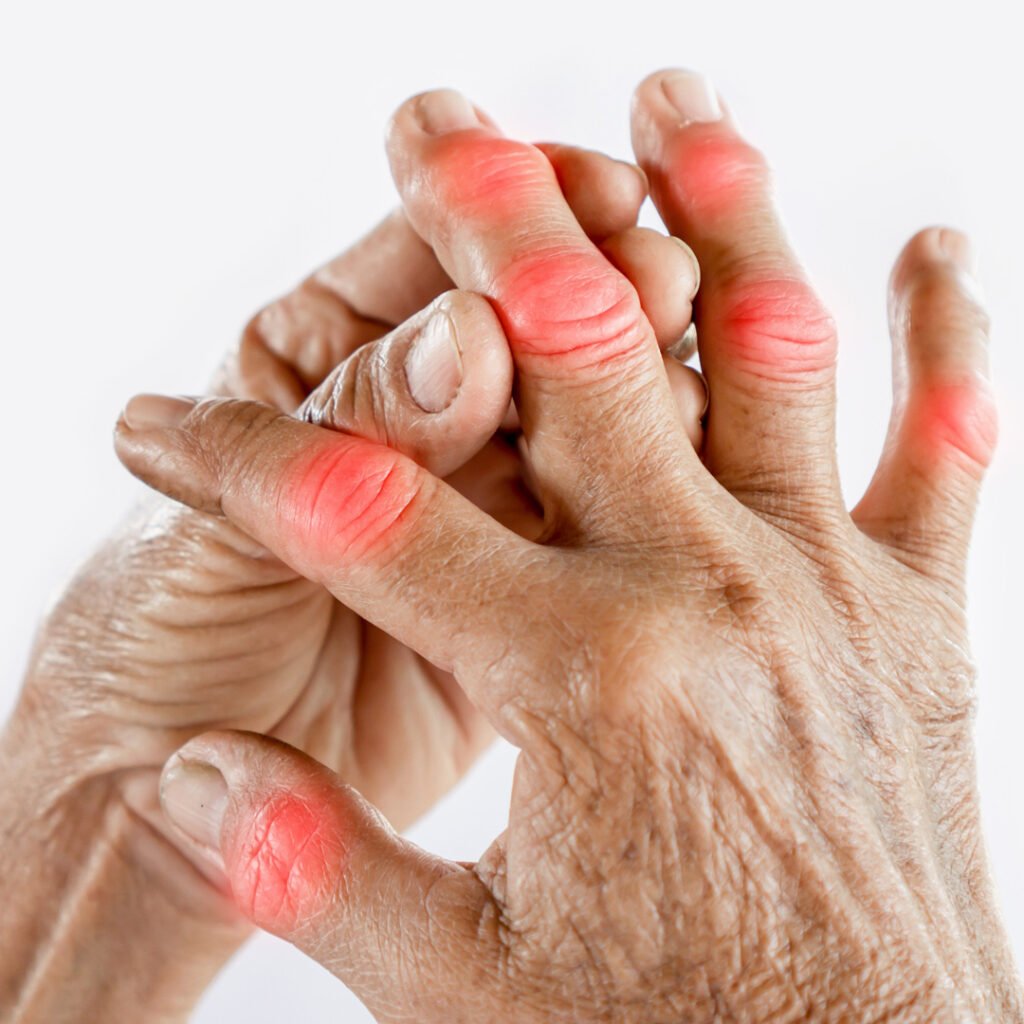Rheumatoid
Introduction
Rheumation (RA) is a long -term autoimmune disorder that mainly affects the joints, causing chronic swelling, pain, hardness and inflammation. It can damage cartilage, bones and surrounding tissues, causing deformity, disability and systemic complications if not treated immediately.

Types of Rheumatoid
Seropoctive rheumatoid arthritis
This normal type refers to the rheumatoid factor and anti-CCP antibodies, causing severe inflammation and progressive joint damage.
Seronagative arthritis
Patients perform negative tests for rheumatoid factor, but still experience frequent swelling, swelling, hardness and joint pain.
Teen rheumatism
There is in children under the age of 16, which presents joint swelling, hardness, persistent pain and disturbances of growth.
Nomadic rheumatism
The firm appears with the firm nodule near the joints, usually associated with severe, chronic and progressive disease.
Causes of Rheumatoid :
- Genetic factor plays a major role, as rheumatoid arthritis often operates in families.
- The malfunction of the immune system triggers the body to attack its own healthy joint tissues.
- Hormonal imbalances, especially in women, can increase the risk of growth of rheumatism.
- Environmental factors such as dust, pollution or exposure to some chemicals can contribute.
- It is suspected to activate unusual immune responses that cause inflammation to viral or bacterial infections.
- Smoking is a strong risk factor that increases both the severity and possibility of rheumatism.
- Obesity puts extra stress on joints and can spoil inflammation in susceptible individuals.
- Chronic physical or emotional stress can trigger the laxity of the immune system that leads to autoimmune.
- Lack of vitamin D and poor nutrition can weaken the protective response to the immune system.
- Increases sensitivity to grow age, especially beyond 40 years, beyond 40 years.
Clinical features of Rheumatoid:
Joint pain and swelling
Constant pain, tenderness and swelling occur in many joints, especially small joints of hands and feet.
Morning rigidity
Patients often experience stiffness lasting for more than 30 minutes in the morning, which gradually improves with movement.
Symmetrical joint participation
Both sides of the body are equally affected, which usually include wrist, knee and finger joints.
Fatigue and weakness
Patients often experience tired, weak and energy loss that is caused by ongoing inflammation.
Deformity and nodule
Chronic disease can be the cause of joint deformity and firm nodules under the skin near the joints.
Symptoms associated with Rheumatoid:
- Constant joint pain develops gradually, usually affects the small joints of hands, wrists and legs.
- The hardness of the morning lasts for more than 30 minutes, slowly relaxing with activity and movement throughout the day.
- Inflammation results in joint inflammation, causing discomfort, restricted mobility and visibility around the joints.
- Continuous fatigue and fatigue remains due to inflammation and the overall body reduces energy levels.
- Low-grade fever occurs often, indicating active inflammation and systemic immune system reaction partnership.
- Loss of appetite gradually develops, causing noticeable weight loss and weakness of the overall body.
- Firm nodules appear under the skin near affected joints, mostly in severe rheumatism.
- Low combined flexibility limits natural movement, eventually as a result of deformity and permanent functional disability.
Investigations in Rheumatoid:
- This blood test detects rheumatoid factor antibodies. A positive result suggests firmly rheumatism, although some healthy people may also show positive results. It helps in diagnosis with other clinical findings.
Anti-CCP antibodies are highly specific for rheumatism. Their presence indicates an aggressive disease course. This test is useful for initial diagnosis and effectively predicts the severity and progress of rheumatism.
ESR measures the rate on which red blood cells live in a test tube. A high value indicates systemic inflammation. This disease helps in assessing activity and monitoring the treatment reaction in rheumatic patients.
CRP is a protein that increases with inflammation. High levels suggest active disease. It is commonly used to monitor the effectiveness of treatment and identify the inflammation in rheumatoid patients.
CBC helps identify the anemia of chronic disease, which is common in rheumatism. It also detects infections, leukocytosis and platelet abnormalities, assisting in the overall evaluation of the patient’s health status.
X-rays manifest the deformity caused by joint space narrowness, bone erosion, and rheumatoid arthritis. Although changes appear later, they help affected joints to assess severity, progress and long -term damage.
The musculoskeletal ultrasound detects joint inflammation, synovitis, and effigies that do not appear on the X-ray. It is sensitive, non-invasive, and is helpful to monitor the reaction of treatment and detect subtle structural changes in the joints.
MRI provides detailed imaging of bones, cartilage and soft tissues. It detects early erosion, synovitis and inflammation with high accuracy. MRI is useful for evaluation of initial diagnosis and disease progression.
This test involves withdrawing the mucus fluid from inflammatory joints. Analysis helps to remove infection, crystal-induced arthritis or gout. Conclusion often shows inflammatory fluid in patients with rheumatism.
These tests do not directly diagnose rheumatism, but are necessary before starting drugs. Medications such as methotrexate affect liver and kidney functions, so monitoring ensures the safety and effective treatment management of the patient.
